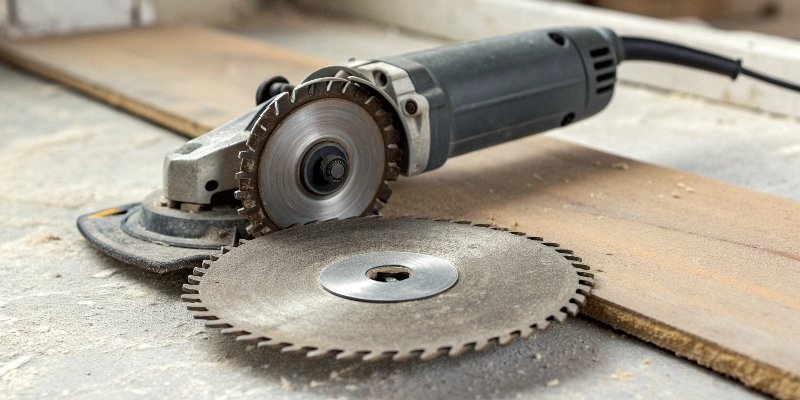
You need to make a quick cut, and your angle grinder is right there. It’s tempting to try and fit a saw blade on it. But this shortcut could lead to a serious accident.
No, you should never put a circular saw blade on an angle grinder. Angle grinders spin at a much higher RPM than the blade is designed for. This creates an extreme risk of the blade shattering and causing severe injury.
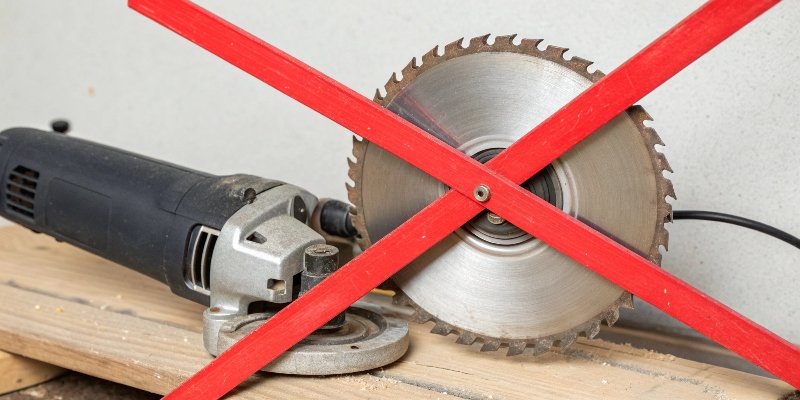
It might look like the parts could fit together, but the tools themselves are built for completely different jobs. In my nearly three decades in the abrasives industry here in Henan, I’ve learned that using the right tool is the first rule of safety and quality work. The consequences of getting it wrong are just too high. Let’s break down exactly why this combination is so dangerous and what you should do instead.
Can you use a saw blade on a grinder?
You might see saw-toothed blades in a store that look like they’re made for grinders. This can make you think it’s a safe practice. But using them can be incredibly dangerous.
You absolutely should not use a standard circular saw blade on an angle grinder1. Grinders spin much faster than circular saws. A saw blade cannot handle this speed and may break apart violently. This is a critical safety mismatch you must avoid.
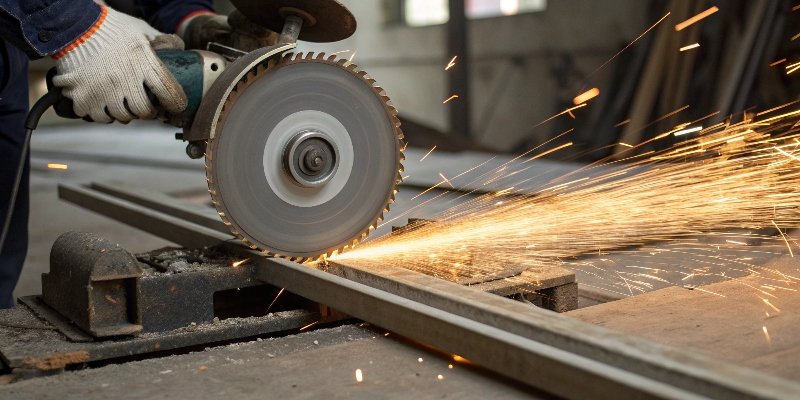
Let’s dive deeper into the core reasons: the huge difference in speed and the fundamental design of each tool. An angle grinder and a circular saw are not interchangeable, and mistaking them can have disastrous results.
Speed Kills: RPM Differences
The most critical danger is the mismatch in rotational speed, or RPM2 (Revolutions Per Minute). A typical handheld angle grinder operates at a very high speed, often between 10,000 and 12,000 RPM. In contrast, a circular saw runs much slower, usually around 4,000 to 6,000 RPM. A circular saw blade3 is only certified to be safe up to its maximum rated RPM. When you put that blade on a grinder, you are forcing it to spin at double its safety limit. The immense centrifugal force will literally tear the blade apart, sending sharp metal fragments flying in all directions.
Built for Different Jobs
The tools are designed from the ground up for different tasks. Trying to make one do the other’s job ignores their built-in mechanics and safety features.
| Feature | Circular Saw | Angle Grinder |
|---|---|---|
| Primary Use | Straight-line cutting | Grinding, cutting, polishing |
| Blade Type | Toothed Blade | Abrasive Wheel |
| Speed | Lower RPM (4k-6k) | High RPM (10k-12k) |
| Guard Type | Full retracting guard | Partial fixed guard |
| Handling | Two-handed, stable base | Freeform, one or two-handed |
As you can see, a saw is a specialized tool for controlled cuts. A grinder is a versatile tool for high-speed material removal. They are not interchangeable.
Can I put a cutting wheel on a grinder?
You need to cut some metal rebar or a paver stone, and you have your angle grinder ready. You know a saw blade is wrong, so what is the right choice for the job?
Yes, you can and should use a cutting wheel on an angle grinder for cutting tasks. But, you must use a proper abrasive cutting wheel, not a grinding wheel. These cutting wheels are thin, reinforced, and clearly rated for the high RPM of your grinder.
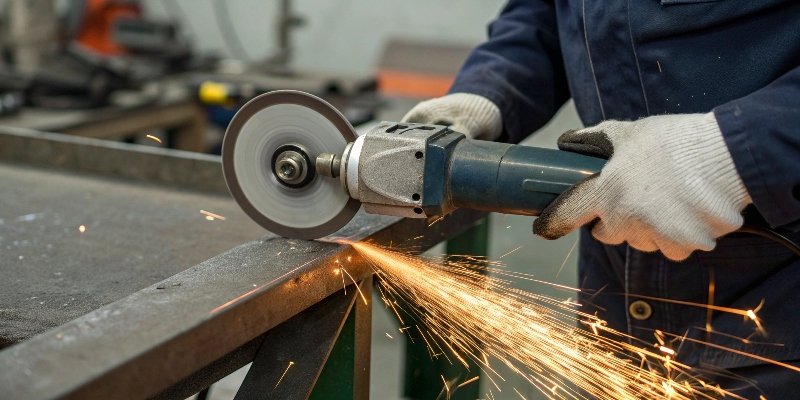
Using the correct accessory is just as important as using the correct tool. While both grinding wheels and cutting wheels are made for grinders, they have very different jobs. Confusing them can be unsafe and give you poor results. As a manufacturer, we produce both types, and we make the differences very clear for our B2B clients to ensure they supply the right product for the right application.
Cutting Wheels vs. Grinding Wheels
A grinding wheel is thick. Its thickness provides the strength needed to handle pressure on its face, which is how you grind down a weld or smooth a surface. If you try to cut with the thin edge of a grinding wheel, you are putting stress on its weakest point. It can easily snag, fracture, and fly apart.
A cutting wheel (or cut-off disc) is very thin. It is designed to slice through material cleanly and with minimal friction. These wheels are reinforced internally with fiberglass mesh for strength, but only for forces along the path of the cut. If you try to grind with a cutting wheel by applying pressure to its side, it will flex and shatter almost instantly.
How to Choose the Right Wheel
When selecting a cutting wheel, you must check two things on the label. First, ensure the wheel is designed for the material you are cutting (e.g., metal, masonry). Second, and most importantly, check the maximum RPM rating printed on the wheel. This RPM number must be higher than the RPM of your angle grinder. Finally, make sure the arbor hole in the center of the wheel matches the spindle on your grinder for a secure fit.
Can you get a saw blade for an angle grinder?
You walk through a tool shop and see small, toothed blades hanging next to the grinding wheels. The package says they are for angle grinders. This is very confusing and seems to contradict all the safety advice.
Yes, some companies make specialty toothed blades for angle grinders, but they are NOT circular saw blades. These are often carbide-toothed discs for wood carving or shaping. They are extremely dangerous and carry a massive risk of violent kickback.
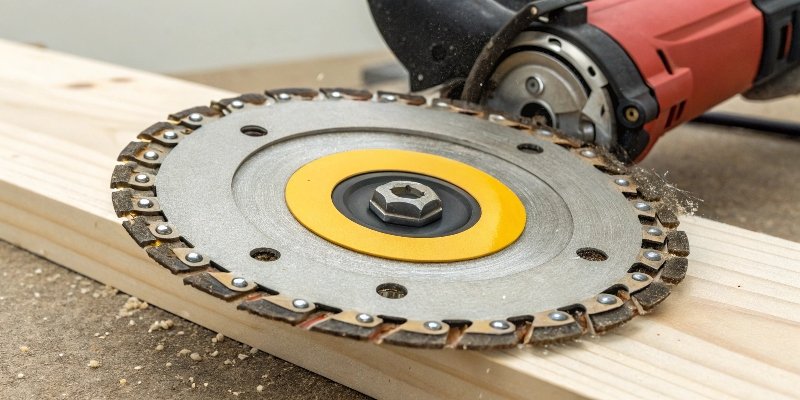
While these products exist, many safety professionals and tool manufacturers, including my own company, strongly advise against them. The design of an angle grinder simply is not equipped to handle the physics of a toothed blade safely. The risk of a life-altering injury is far too high for the convenience they might offer.
The Uncontrollable Danger of Kickback
Kickback happens when a single tooth on a spinning blade snags in the material. Instead of cutting, it bites in and instantly launches the entire tool backward toward the operator. A circular saw has safety features to fight this: a riving knife to keep the cut open and a large baseplate that helps prevent the tool from twisting. An angle grinder has none of these. It’s a small, handheld tool with incredible rotational power. When a toothed blade on a grinder kicks back, it is explosive and uncontrollable.
Professional Alternatives
I have spoken with many professional fabricators who purchase our abrasive products. The consensus is clear: these toothed grinder discs are avoided. The risk is simply not worth it. For cutting tough materials like tile, stone, or reinforced concrete, the professional choice is a diamond blade4 used on the proper tool, like a wet saw or a demolition saw. We manufacture diamond saw blades at our factory in Henan, and they are engineered for safety and peak performance, but only when used on the correct machine.
Is a grinder a circular saw?
Both tools spin a round blade or disc. They both make a lot of noise and can cut through tough materials. It’s easy to see why someone might think they are just different sizes of the same tool.
No, an angle grinder is not a circular saw. A grinder is a high-speed tool that uses abrasive force for grinding and cutting. A circular saw is a lower-speed, high-torque tool that uses toothed blades to make straight cuts.
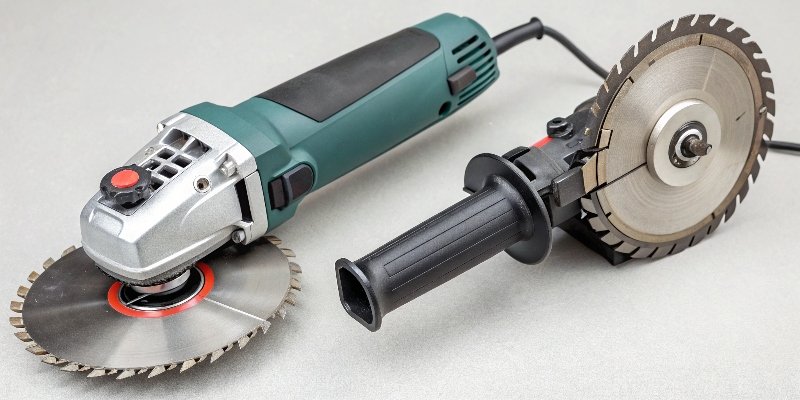
Understanding that they are fundamentally different tools is the key to using both of them safely and effectively. Their internal mechanics and external safety systems5 are designed for completely separate tasks. As a buyer for your company, knowing this distinction helps you source the right tools and accessories for your team’s needs.
Torque vs. Speed
The main mechanical difference is torque versus speed. A circular saw is built for torque. It needs high rotational force to push the blade’s teeth through thick material like wood without stopping. Its speed is secondary to its power. An angle grinder is built for speed. It uses extremely high RPMs to make the tiny abrasive particles on a wheel act like microscopic cutting tools, shearing away material. It has much less torque than a saw and will bog down if you push it too hard.
Safety Systems and Control
Their safety designs reflect their purpose. A circular saw has a large base plate that rests on the workpiece for stability. It has a full blade guard that retracts as you cut and a riving knife to prevent the wood from pinching the blade. A grinder has a simple, open-sided guard and a side handle. It is meant for freehand work, not stable, guided cuts. Using it like a saw bypasses every safety feature a real saw provides, leaving you completely exposed to danger.
Conclusion
Never put a circular saw blade on an angle grinder. The risk of the blade shattering is too high. Always use the right tool with the right accessory for the job.
-
Learn about the versatility and applications of angle grinders for safe and effective use. ↩
-
Discover how RPM affects tool performance and safety in various applications. ↩
-
Understanding the dangers of using a circular saw blade on an angle grinder can prevent serious accidents. ↩
-
Learn about the advantages of diamond blades for cutting tough materials safely. ↩
-
Understanding safety systems can help you operate tools more safely and effectively. ↩
Written by
leeon
You may also be interested in:
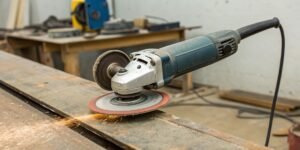
What is an angle grinder?
Are you confused by this powerful, versatile tool? You see it everywhere but are not sure what it does or if you need one. Getting

Can an angle grinder with a diamond blade cut granite?
Struggling to cut tough materials like granite? Using the wrong tool can lead to broken blades, ruined stone, and wasted budgets. The right setup, however,
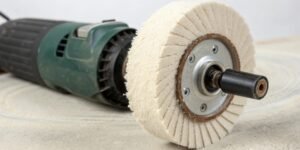
What is a buffing wheel used for?
Dull, scratched surfaces can ruin your products. This costs time and money. A buffing wheel is your tool to restore that perfect, professional finish everyone
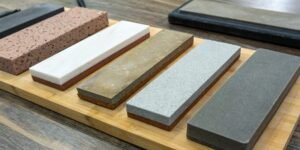
What is the best type of sharpening stone for kitchen knives?
Your kitchen knives are getting dull, making simple tasks like slicing a tomato a frustrating chore. A dull knife is a dangerous knife, but choosing
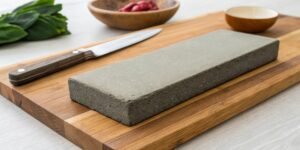
What is a good sharpening stone for my knives?
A dull knife is frustrating and can be unsafe. But with so many sharpening stones available, choosing the right one feels overwhelming. I will help

What belt grinder should a (beginner) knife maker own?
Starting knife making is exciting, but choosing the right grinder is overwhelming. The wrong one ruins projects and wastes money. This guide simplifies picking the
